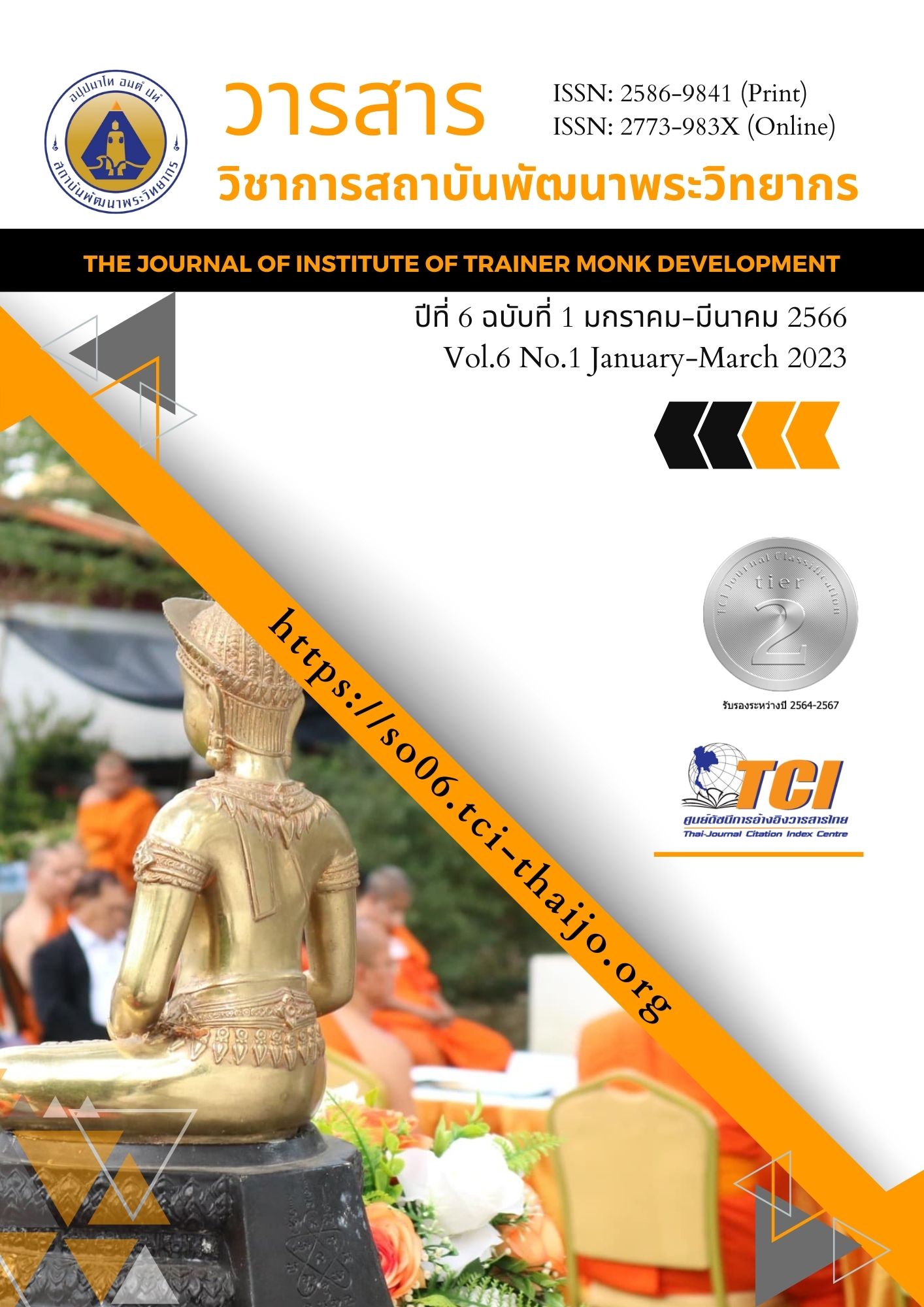The Factors for Driving National Strategy on Education of Educational Service Area Office
Main Article Content
Abstract
This study was a descriptive research where applying mix method receive research design. The purposes of this study were to identifying: 1) the factors for driving national strategy on education of Educational Service Area Office, and 2) the confirmations of the factors for driving national strategy on education of Educational service area office. The population of this study were 245 educational service area office composed of 183 primary educational service area offices and 62 secondary educational service area office. The sample was determined by Krejcie and Morgan table. The stratified random sampling was used to get the sample. The samples determined by the proportion from each part of Thailand; 37 offices from Central Part, 11 offices from East Part, 11 offices from West Part, 21 offices from north part, 48 offices from North East Part, and 24 offices from South Part, with a total of 152 offices. The respondents from each office composed of a director, a deputy director, a head of policy and planning section, totally 3 respondents from each office, with a total of 456 respondents.
The findings of this study revealed that: 1. The factors for driving national strategy on education of Educational Service Area Office composed of 6 factors: 1) Formulating team work systematically, 2) Setting action plan that covers all aspects and is flexibility, 3) Applying innovation and information technology in managing and monitoring effectively, 4) Developing the Promote the personnel who responsible in policy implementation, 5) Stimulating the cooperative and understanding among the team work., and 6) Setting a system of faire and equilibrium in budgeting. 2. The confirmation of factors and the factors for driving national strategy on education of Educational Service Area Office found out that all experts had consensus opinion on 6 factors were accuracy, appropriately, possibility, and utility.
Article Details

This work is licensed under a Creative Commons Attribution-NonCommercial-NoDerivatives 4.0 International License.
บทความที่ได้รับการตีพิมพ์เป็นลิขสิทธิ์ของวารสารวิชาการสถาบันพัฒนาพระวิทยากร
ข้อความที่ปรากฎอยู่ในบทความที่ได้รับการตีพิมพ์ในวารสาร ถือเป็นความรับผิดชอบของผู้เขียนบทความ และข้อคิดเห็นนั้นไม่ถือว่าเป็นทัศนะและความรับผิดชอบของกองบรรณาธิการวารสารวิชาการสถาบันพัฒนาพระวิทยากร
References
กลุ่มวิจัยเชิงประเมินและสารสนเทศ สำนักติดตามและประเมินผลการจัดการศึกษาขั้นพื้นฐาน. (2565). รายงานการศึกษาและพัฒนารูปแบบการขับเคลื่อนการนำนโยบายไปสู่การปฏิบัติ ของสำนักงานเขตพื้นที่การศึกษา ประจำปีงบประมาณ พ.ศ. 2565. กรุงเทพฯ: กระทรวงศึกษาธิการ.
เก็จกนก เอื้อวงศ์. (2565). “การนำนโยบายไปปฏิบัติของผู้บริหารสถานศึกษา: สมรรถนะและแนวทางการพัฒนา 2565.” วารสารครุศาสตร์สาร ปีที่ 16 ฉบับที่ 1 (มกราคม-มิถุนายน): 77-92.
รพีพร รุ้งสีทอง. (2565). แนวทางการนำแผนกลยุทธ์สู่การปฏิบัติ: บทความธุรกิจ. กรุงเทพธุรกิจ มีเดีย. สืบค้นข้อมูลเมื่อ 1 ธันวาคม 2565 จาก https://www.bangkokbiznews.com/
ปรีชาชาญ อินทรชิต. (2556). “การพัฒนายุทธศาสตร์สถานศึกษาขั้นพื้นฐานที่มีขีดสมรรถนะสูงสังกัดสำนักงานเขตพื้นที่การศึกษาประถมศึกษา.” วารสารศึกษาศาสตร์ มหาวิทยาลัยนเรศวร 15
(ฉบับพิเศษ): 146-159.
ศศิวรรณ ต้นกันยา. (2559). “ปัญหาและแนวทางการนำแผนกลยุทธ์ไปสู่การปฏิบัติในสถานศึกษาขั้นพื้นฐานสังกัดสำนักงานเขตพื้นที่การศึกษาประถมศึกษาขอนแก่น เขต 4.” วารสารศึกษาศาสตร์ มหาวิทยาลัยมหาสารคาม ปีที่10 ฉบับที่ 3 (กรกฎาคม-กันยายน): 164-177.
ศิริพร ศรีอ่ำดี. (2559). “การนำแผนยุทธศาสตร์การพัฒนาไปปฏิบัติของเทศบาล ตำบลบางเดื่อ อำเภอเมืองปทุมธานี จังหวัดปทุมธานี: กรณีศึกษาด้านระบบสาธารณูปโภค สาธารณูปการ และ โครงสร้างพื้นฐาน”. วิทยานิพนธ์รัฐศาสตรมหาบัณฑิต (การเมืองการปกครอง). มหาวิทยาลัยธรรมศาสตร์.
สุธาสินี โพธิจันทร์.(2561). “PDCA หัวใจสำคัญของการปรับปรุงอย่างต่อเนื่อง.” วารสาร Productivity World 19(115) (มีนาคม-เมษายน): 93-97.
สำนักงานสภาพัฒนาการเศรษฐกิจและสังคมแห่งชาติ. (2565). การขับเคลื่อนยุทธศาสตร์ชาติ: คู่มือคำอธิบายการขับเคลื่อนยุทธศาสตร์ชาติ. สืบค้นข้อมูลเมื่อ 8 เมษายน 2565 จากhttp://nscr.nesdc.go.th/nsimplement/
สำนักงานคณะกรรมการการศึกษาขั้นพื้นฐาน. (2565). นโยบาย สพฐ. สืบค้นข้อมูลเมื่อ 27 เมษายน 2565 จาก https://www.obec.go.th
สิริฤกษ์ ทรงศิวิไล. (2561). “โครงสร้างและกลไกการขับเคลื่อนยุทธศาสตร์ การวิจัยและนวัตกรรมของประเทศ.” วารสารรัฏฐาภิรักษ์ 60(3) (กันยายน-ธันวาคม): 9-21.
รัฐธรรมนูญแห่งราชอาณาจักรไทย. (2560). ราชกิจจานุเบกษา. เล่มที่ 134 ตอนที่ 40 ก (6 เมษายน 2560): 1-90.
Brian Bolton & Jung Park. (2022). “Social impact as corporate strategy: responsibility and opportunity.” Cogent Business & Management 9(1): 1-12.
Fullan, M. (2001). Leading in a Culture of Change. San Francisco, CA: Jossey-Bass.
Katie Oost, Bregje De Vries, & Joop A. Van der Schee. (2011). “Enquiry-driven fieldwork as a rich and powerful teaching strategy–school practices in secondary geography education in the Netherlands.” International Research in Geographical and Environmental Education 20(4): 309-325.
Karari, C. W., Kihara, M. P., & Munga, J. (2017). “Relationship between strategy implementation drivers and performance of high-growth firms in Kenya.” International Journal of Business Management & Finance 1(18): 3-15.
Nasir Koranteng Asiedu. (2022).U “nderstanding knowledge management strategies in institutions of higher learning and the corporate world: A systematic review.” Cogent Business & Management 9(1):1-15.
William Edwards Deming. (1993). The New Economics for Industry, Government, and Education. Boston Ma: MIT Press.


